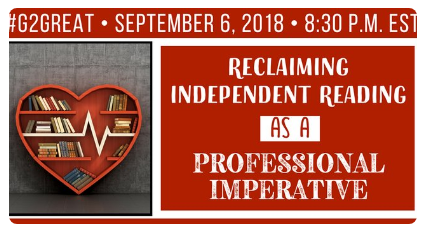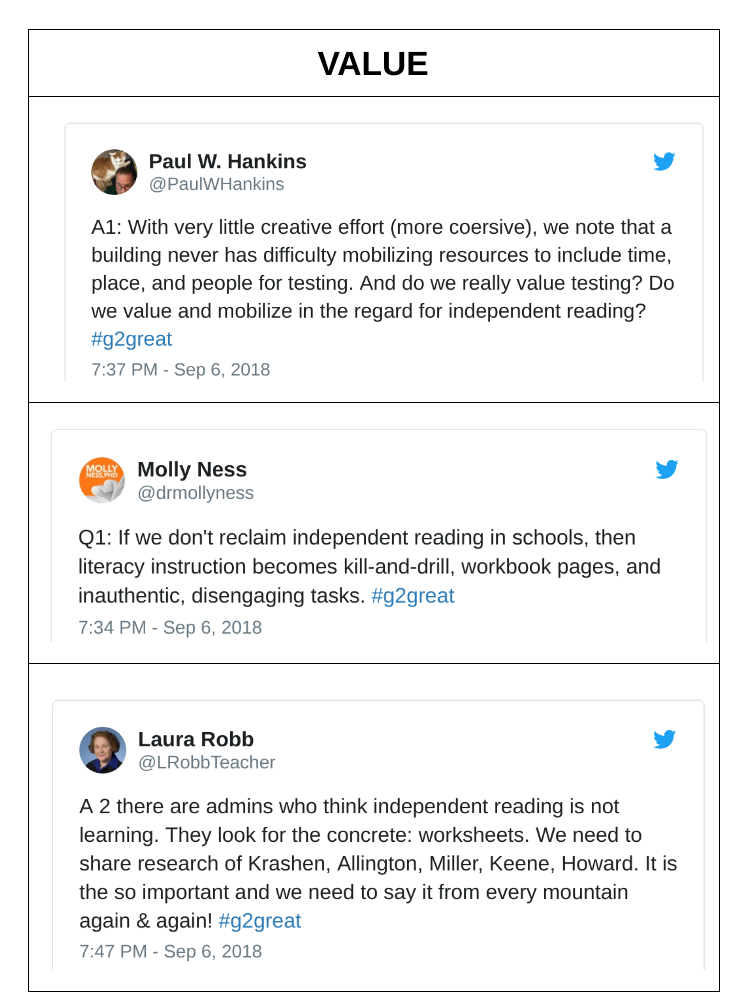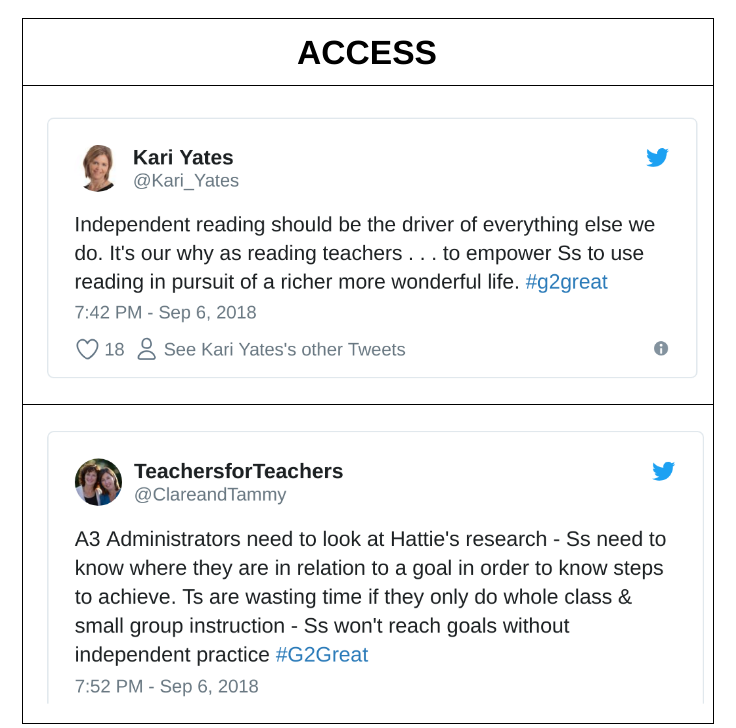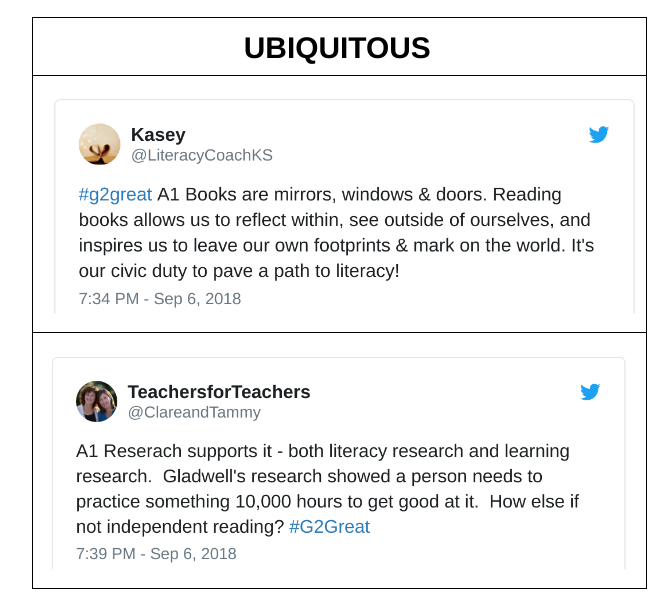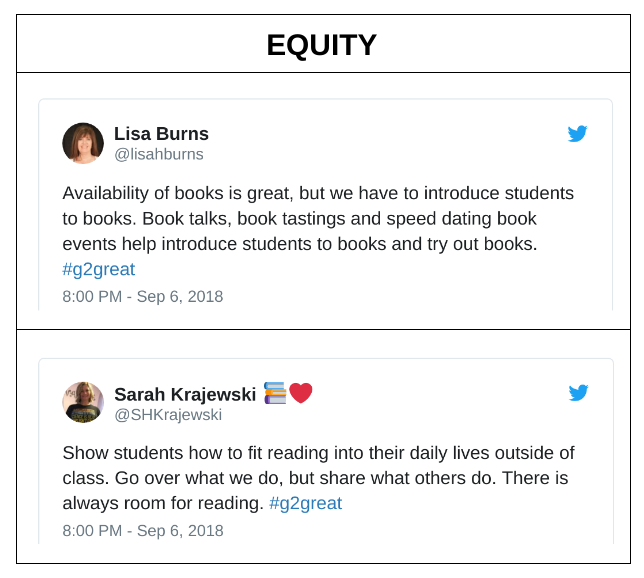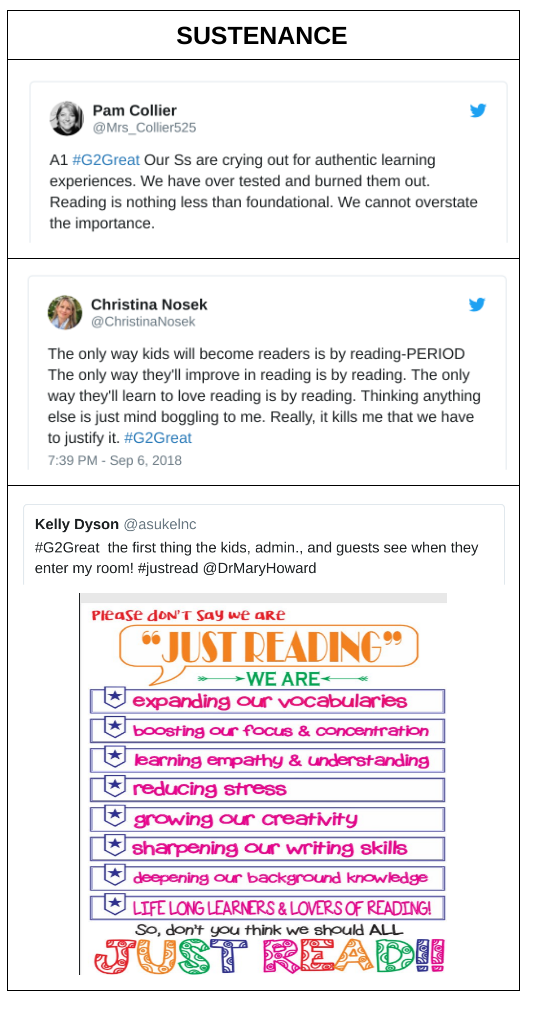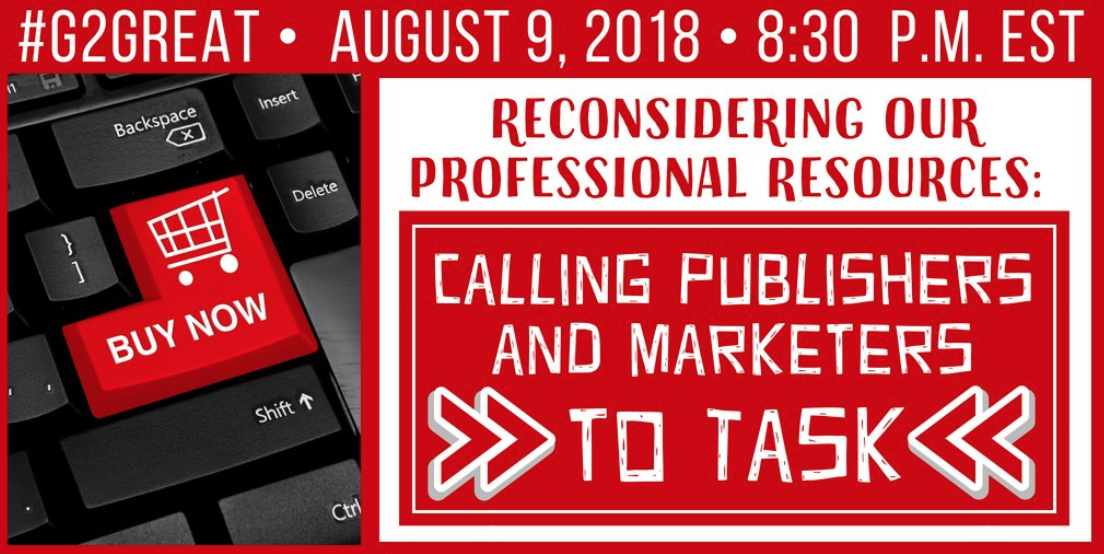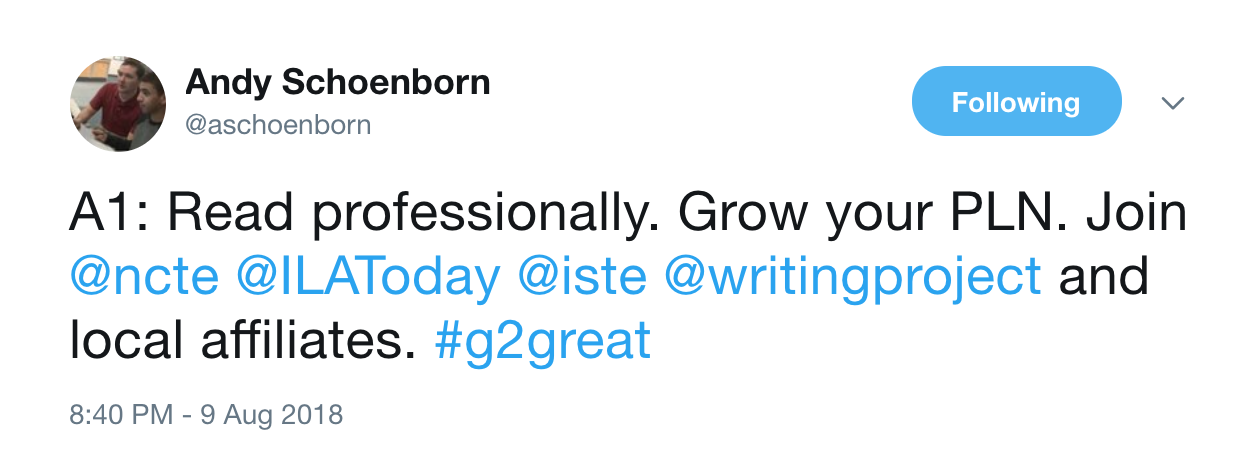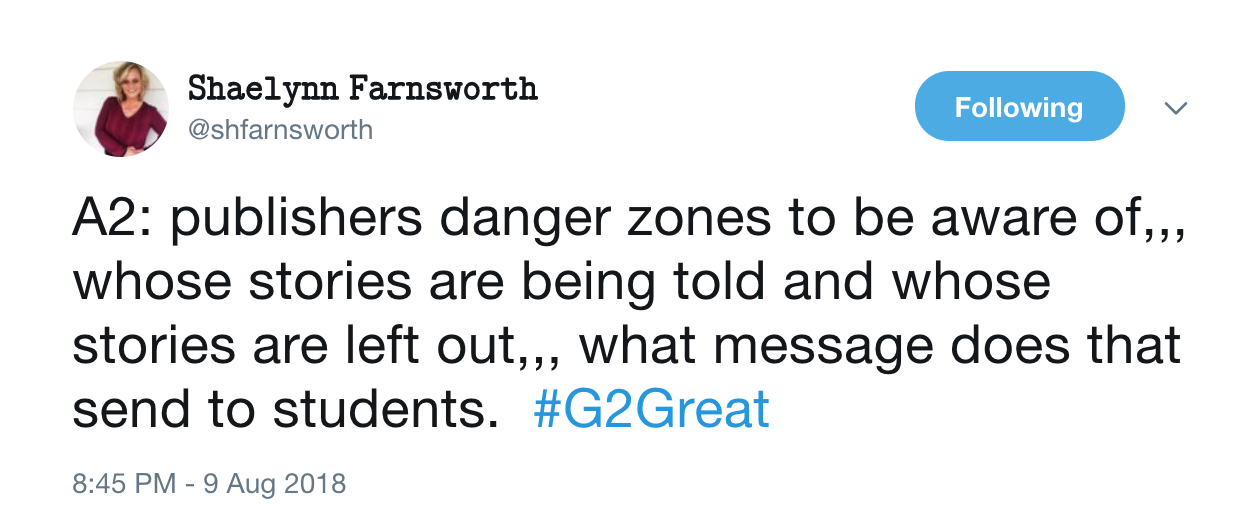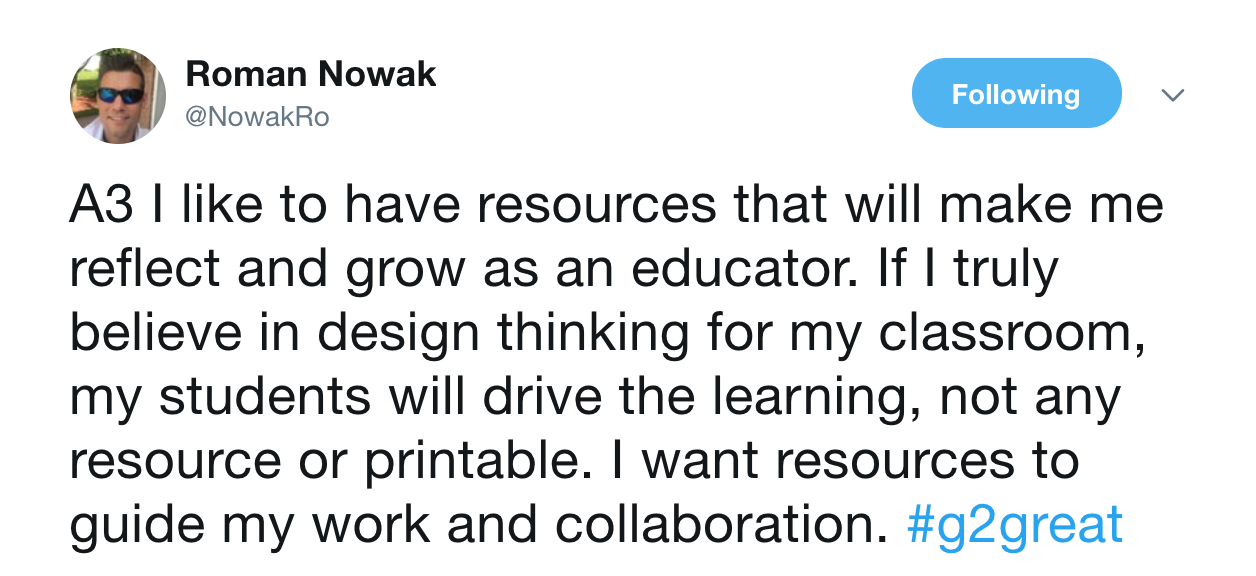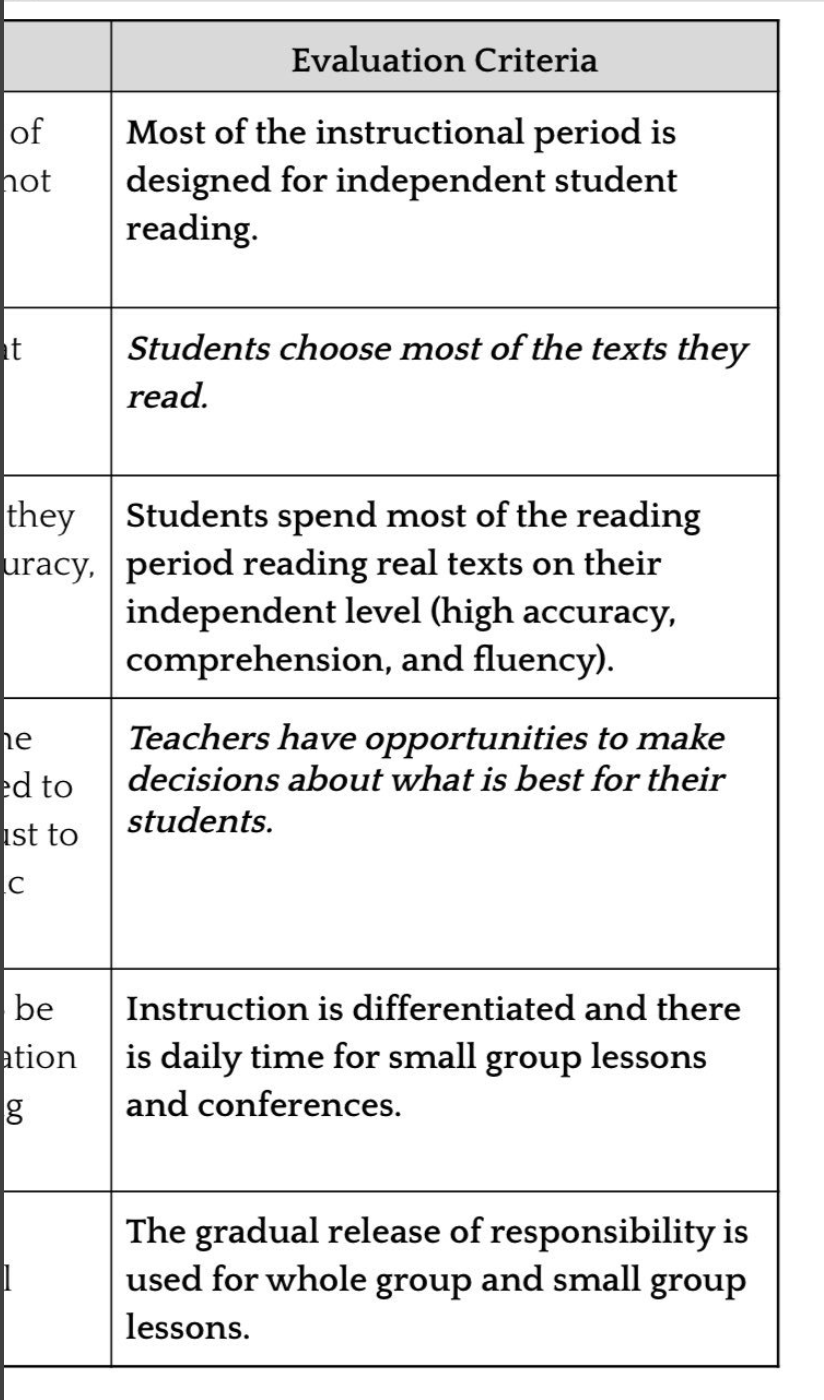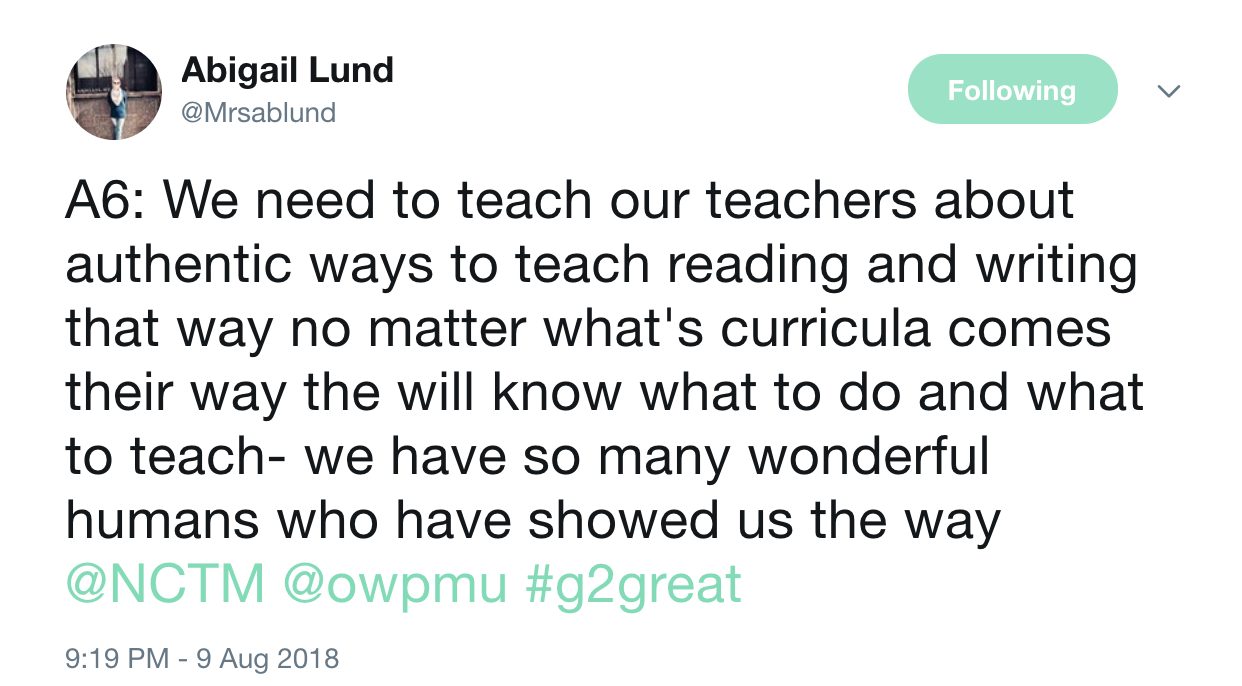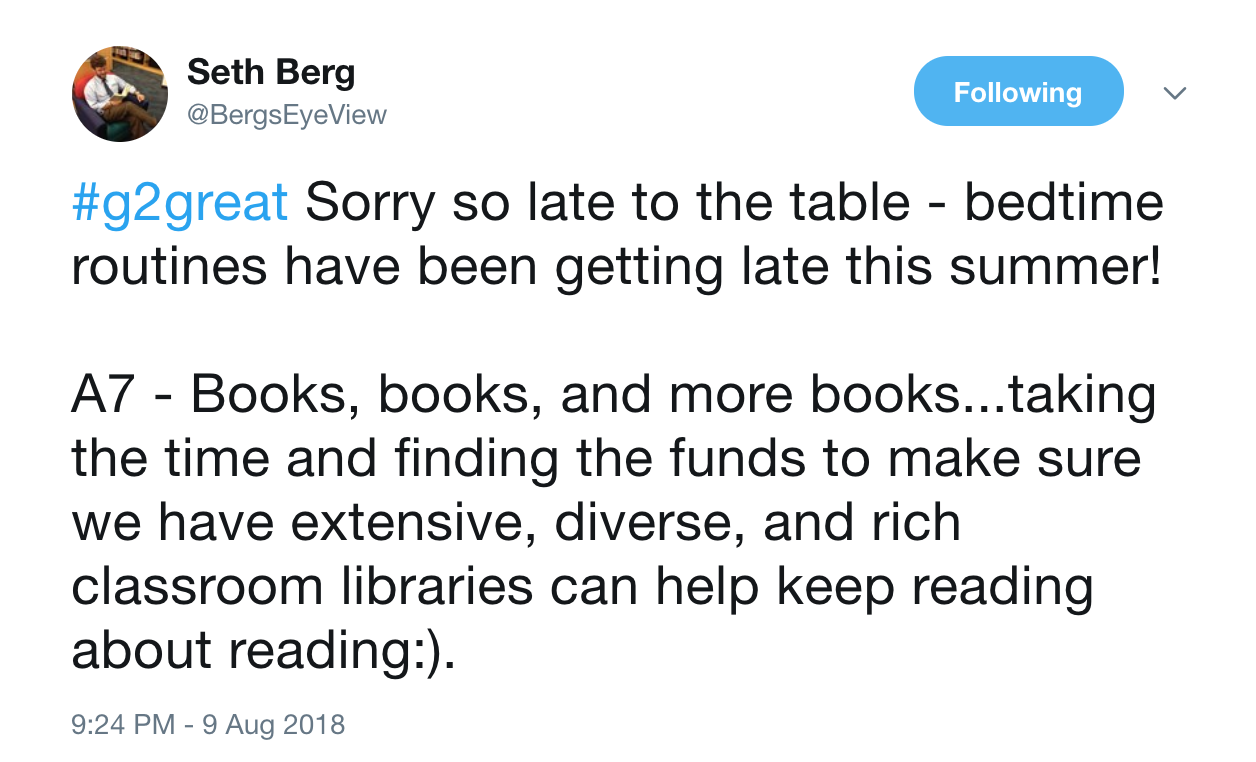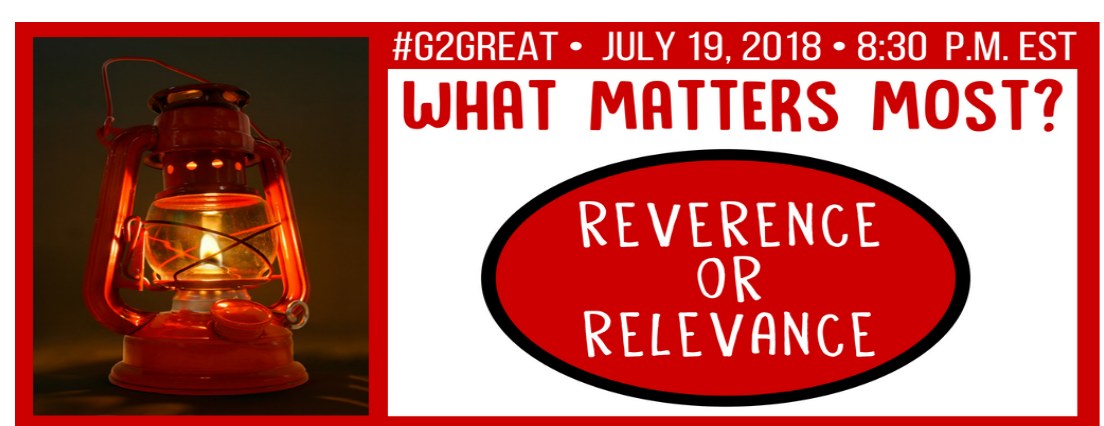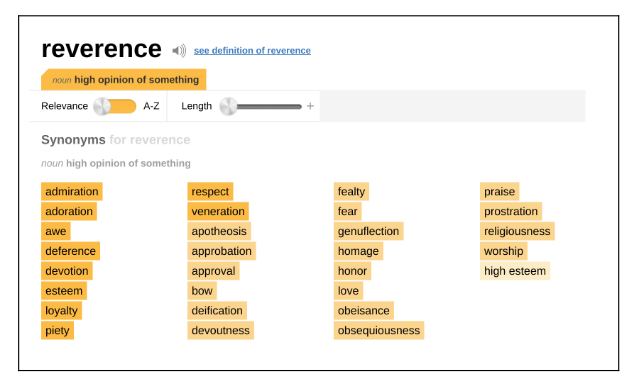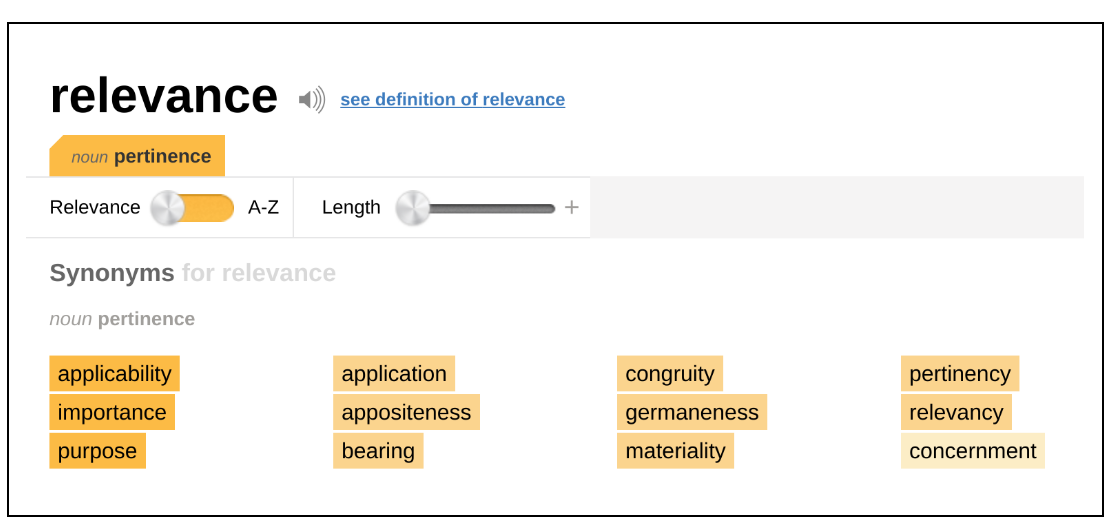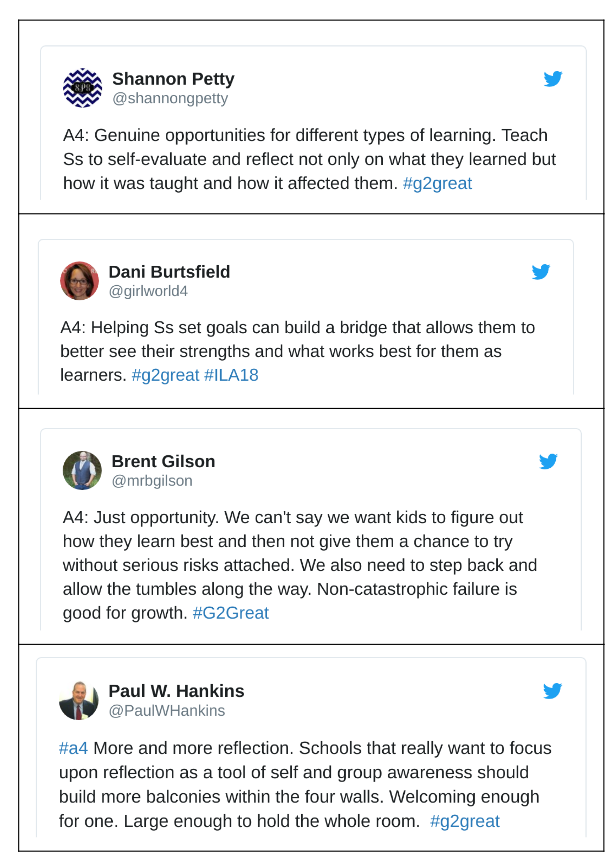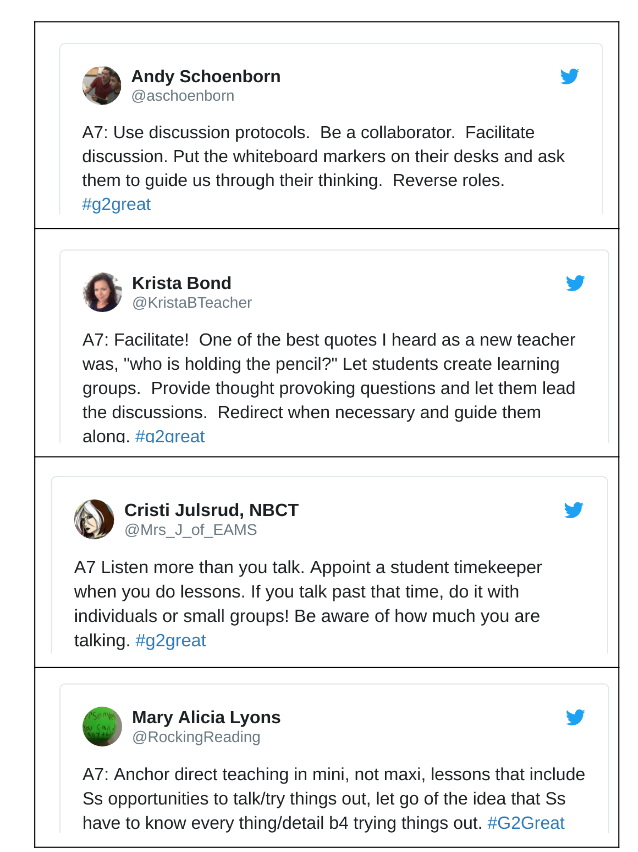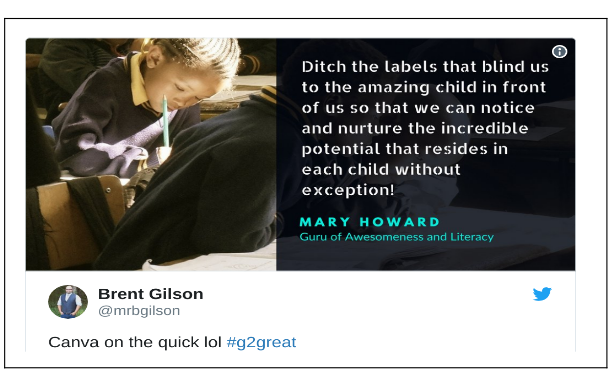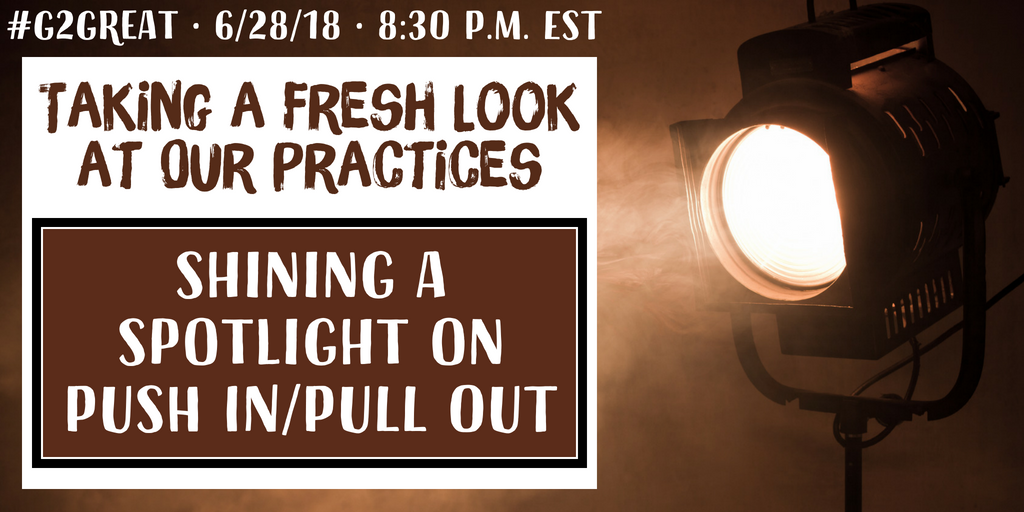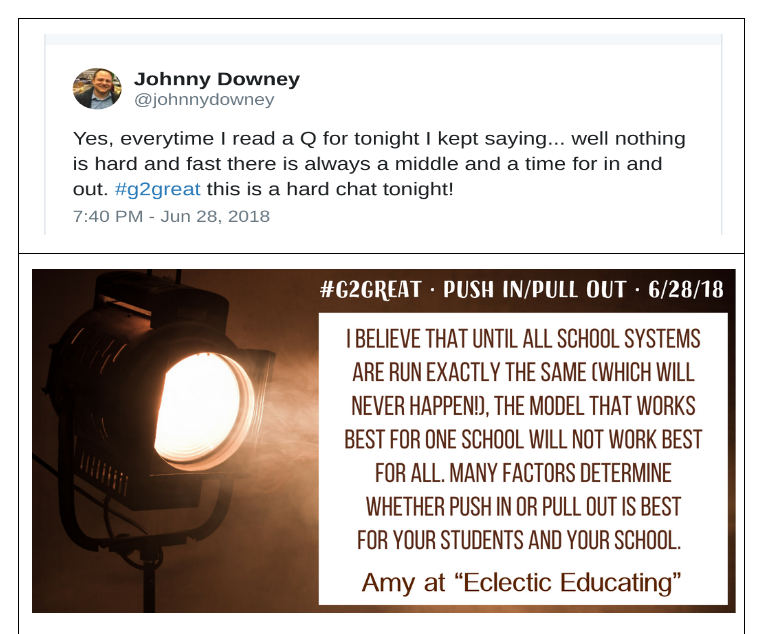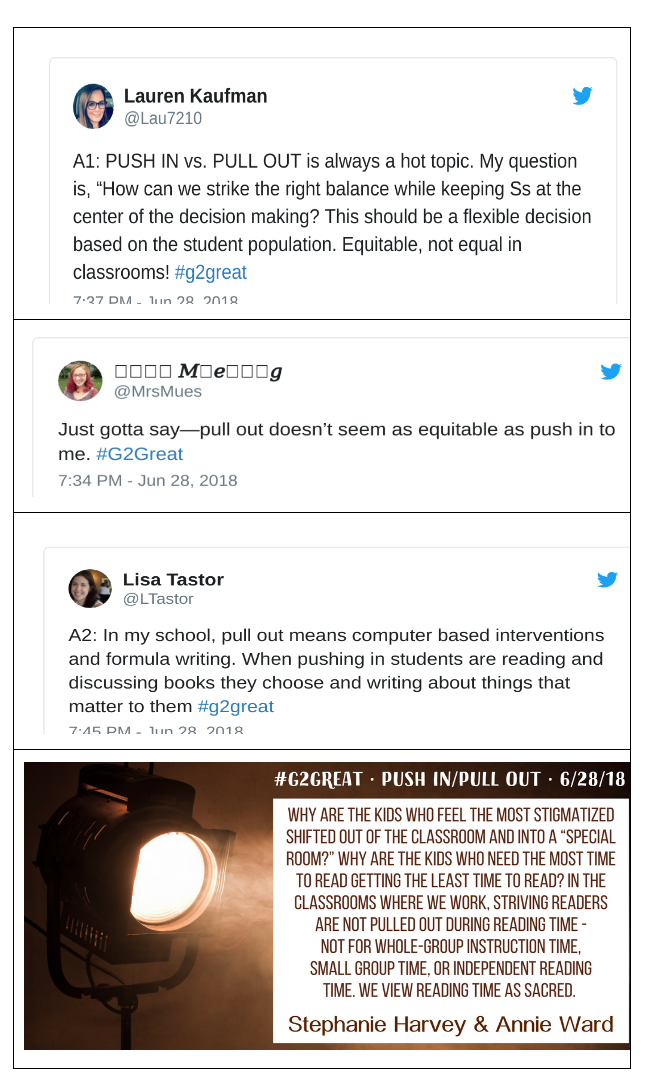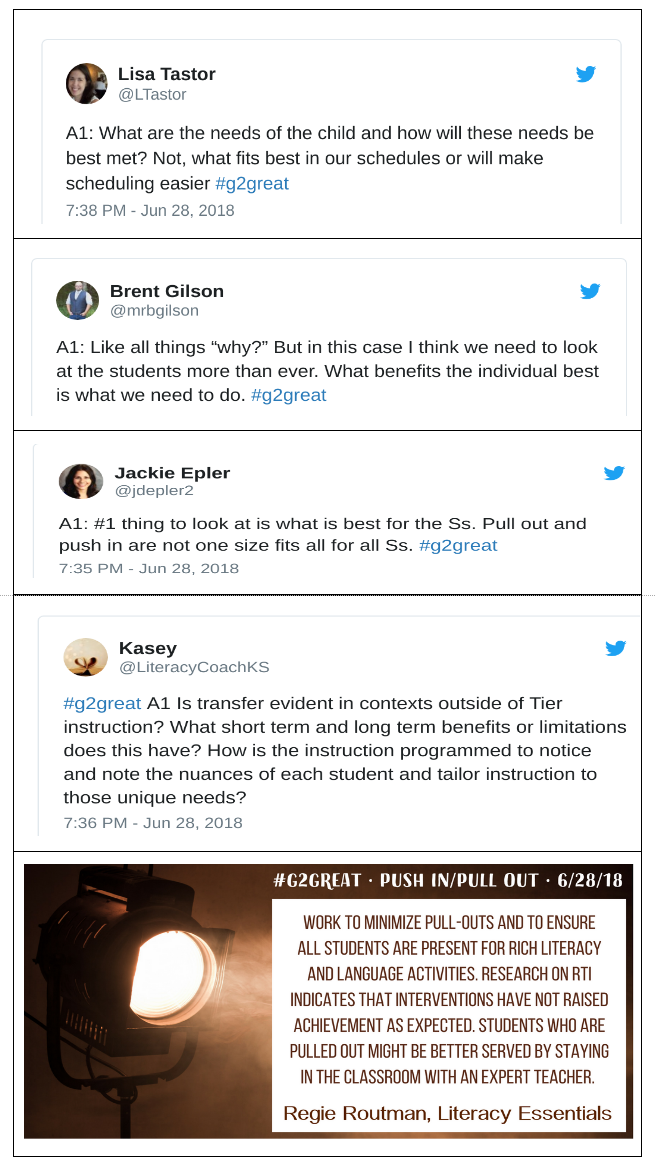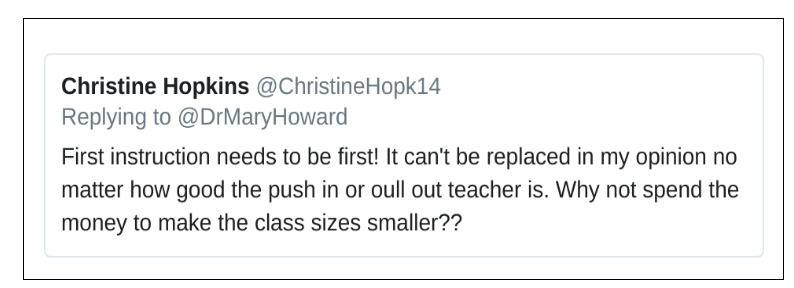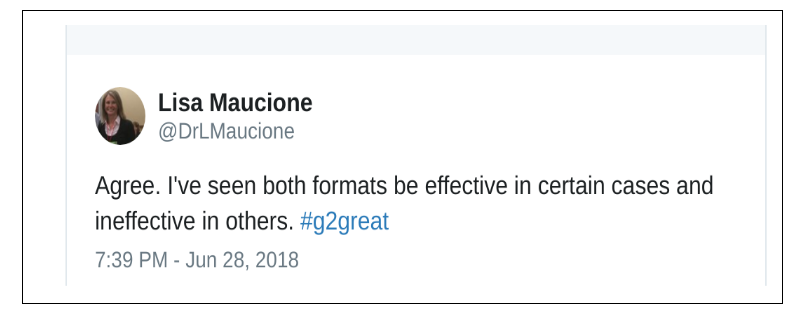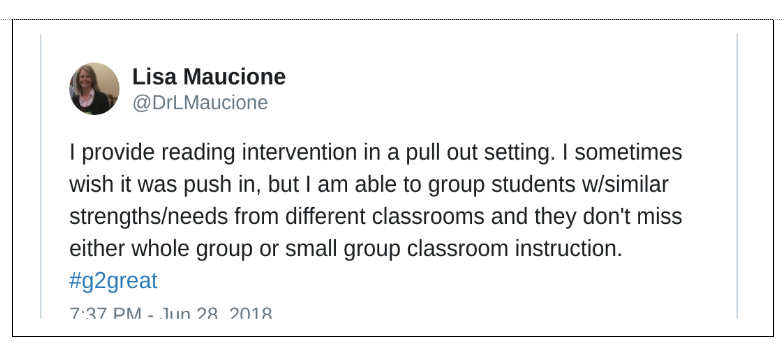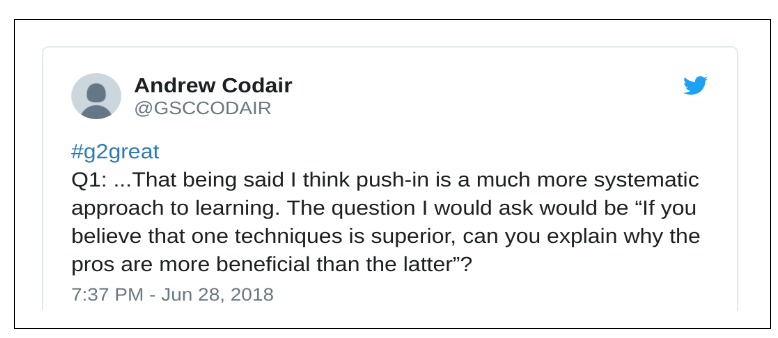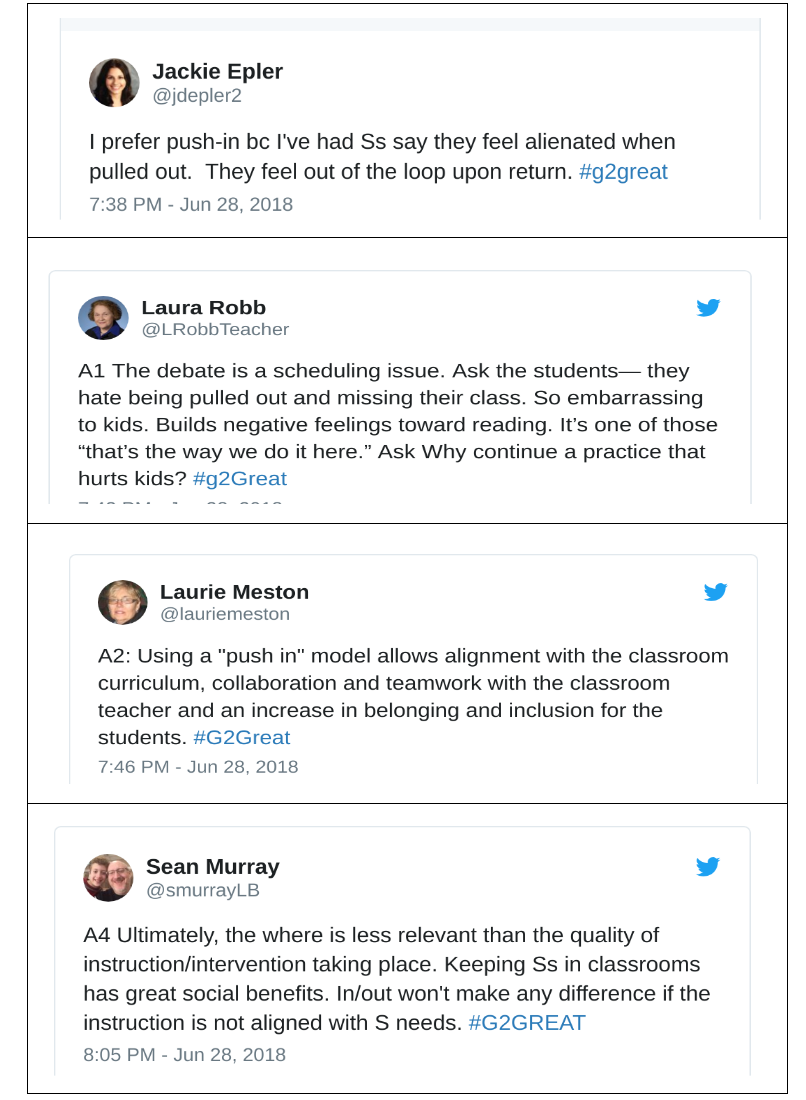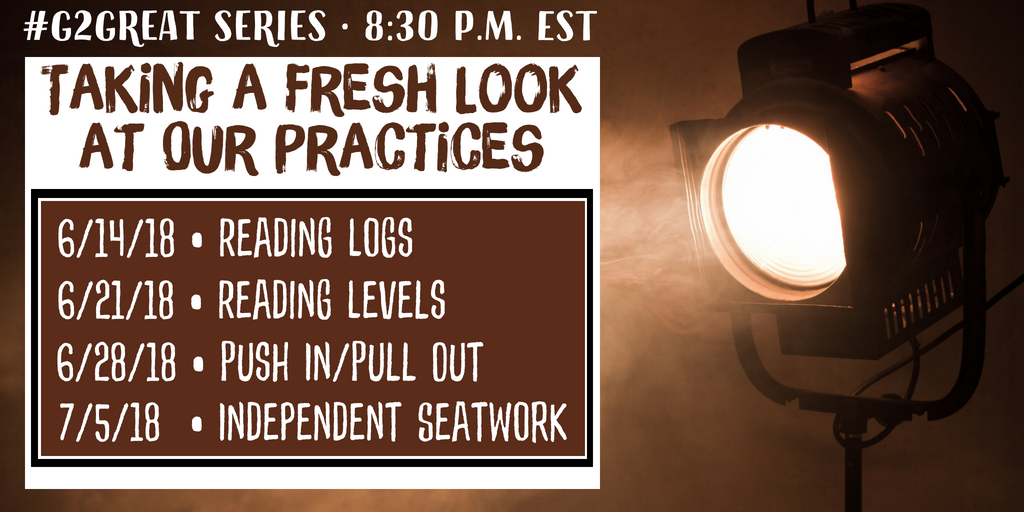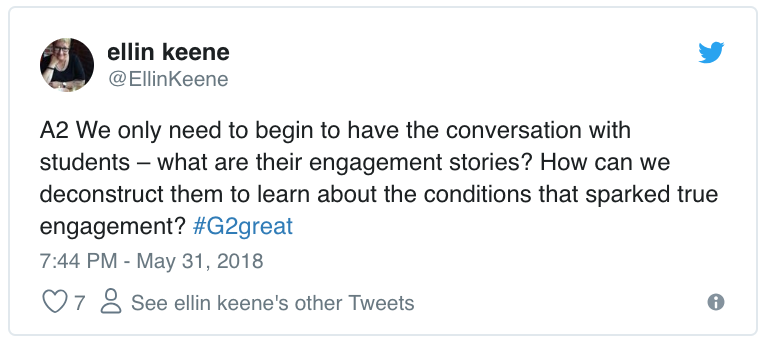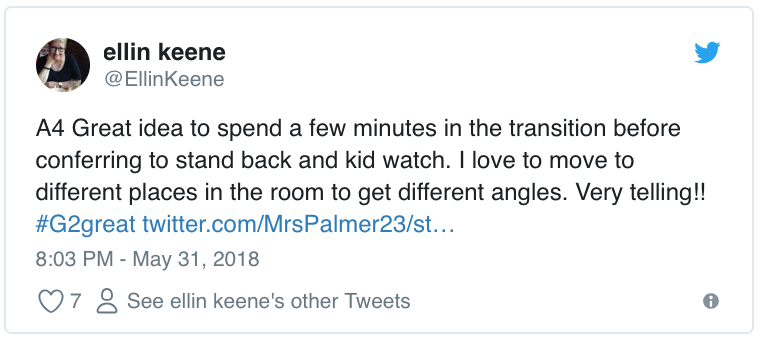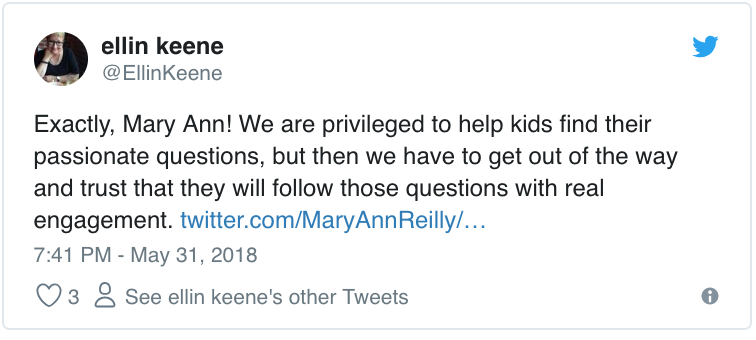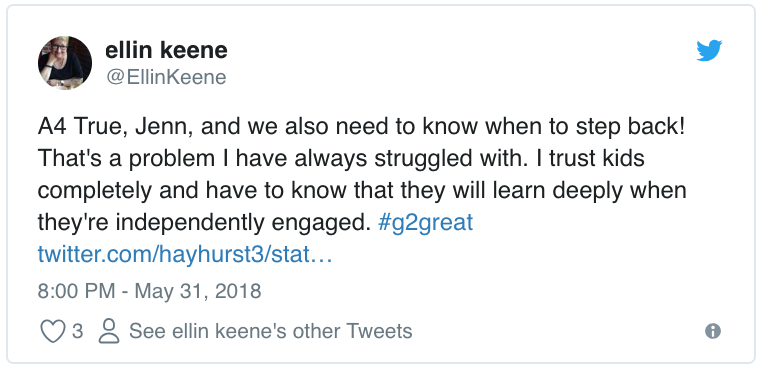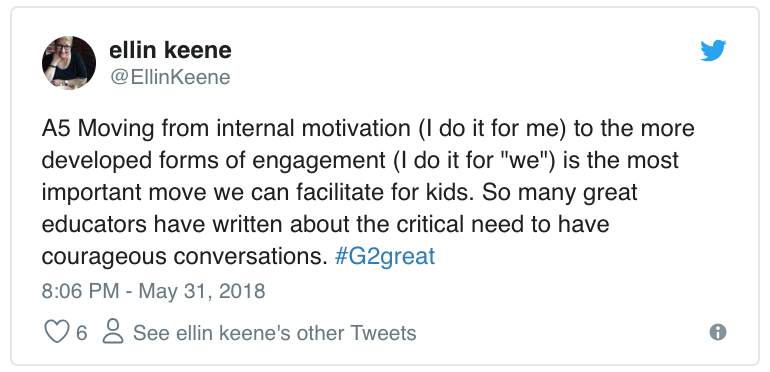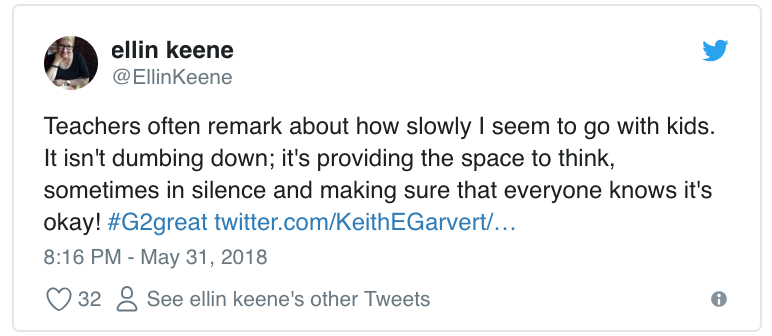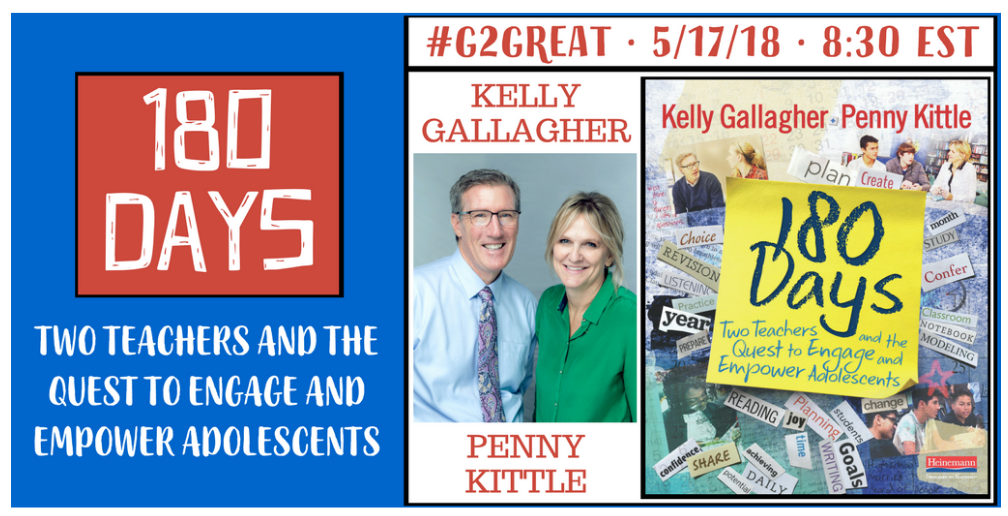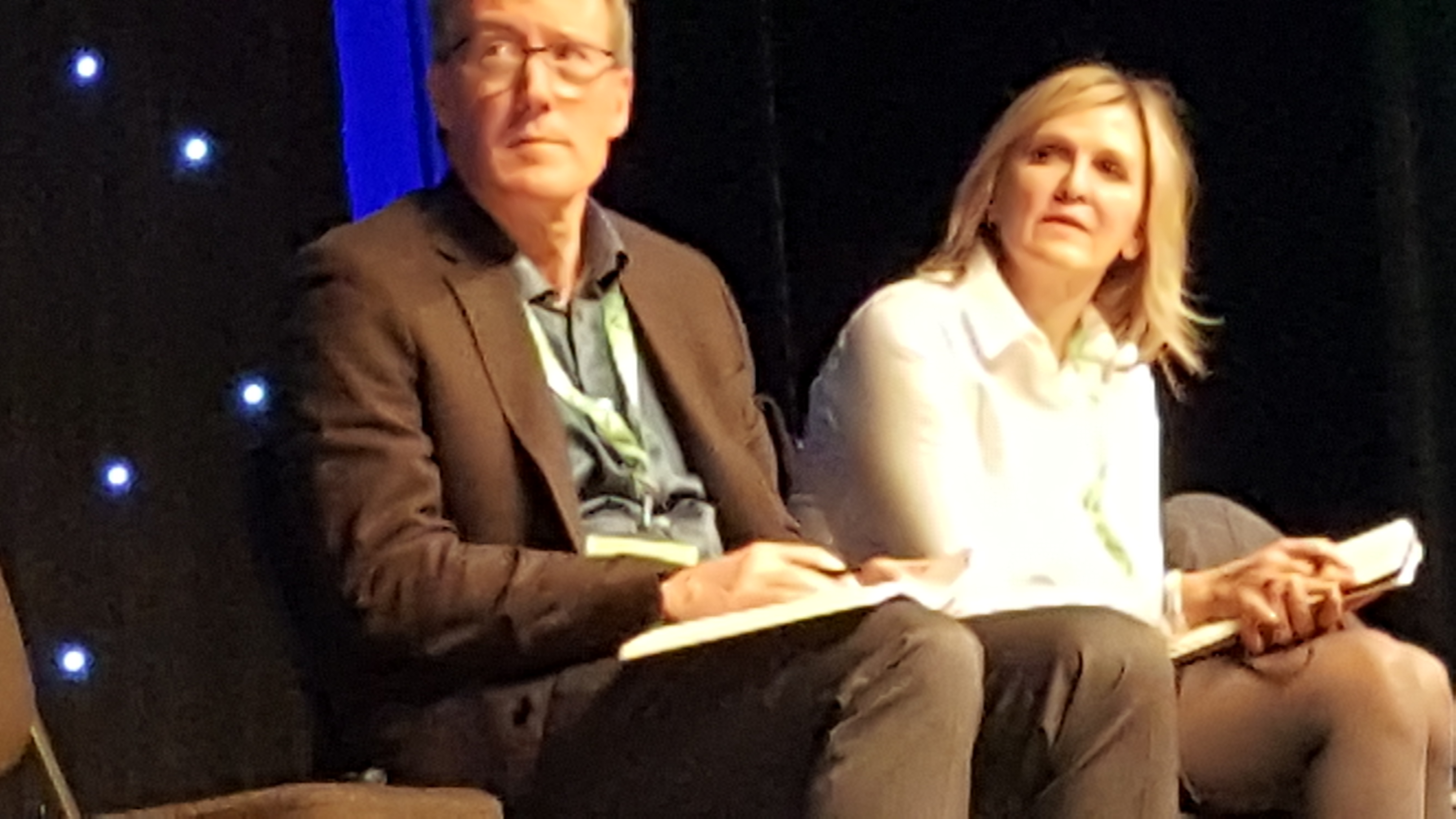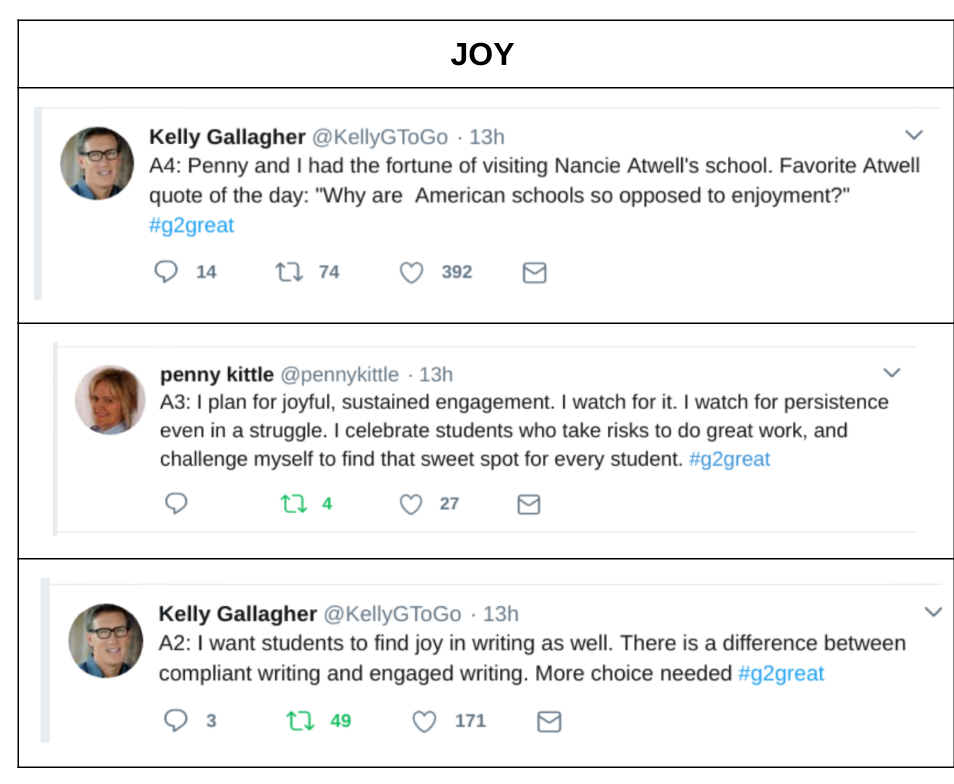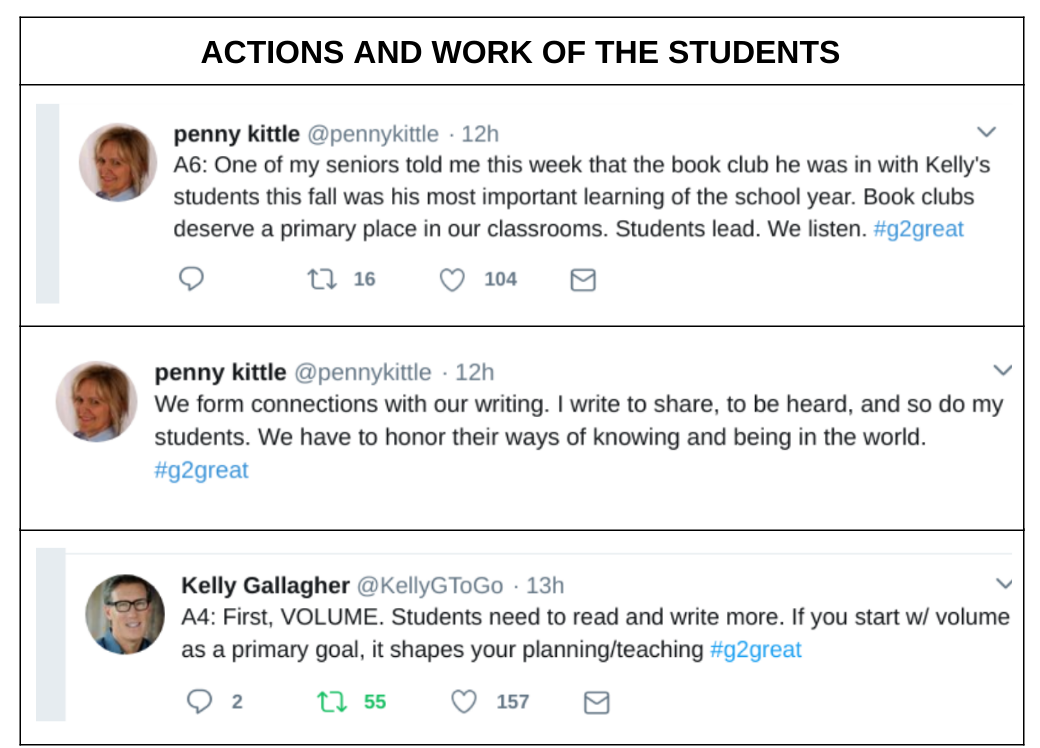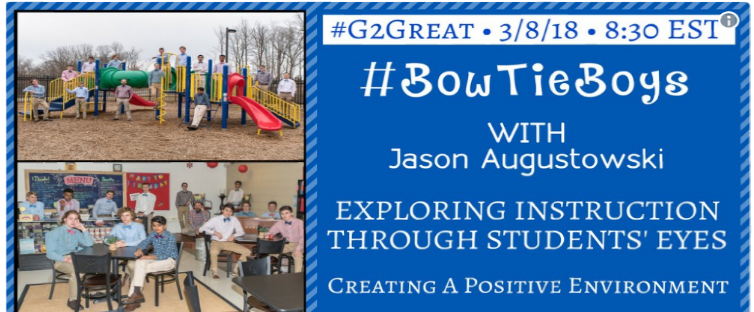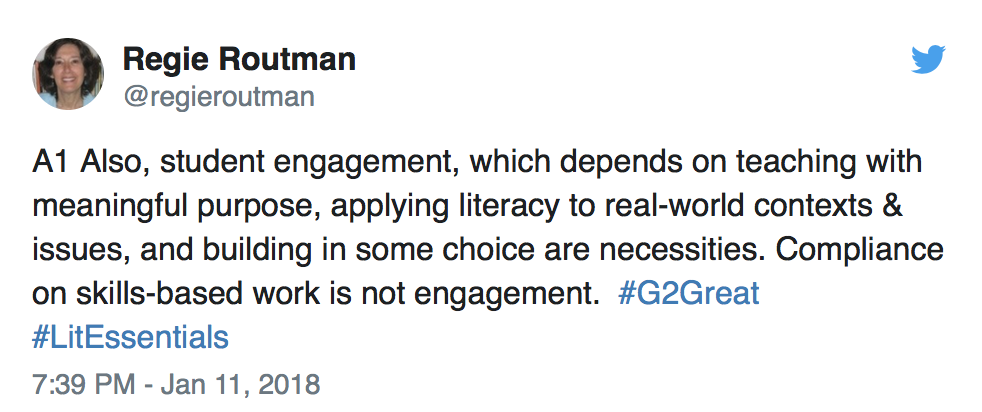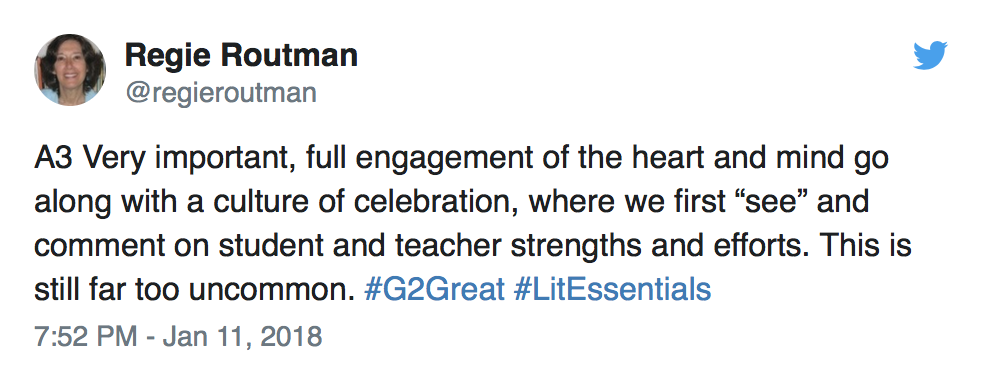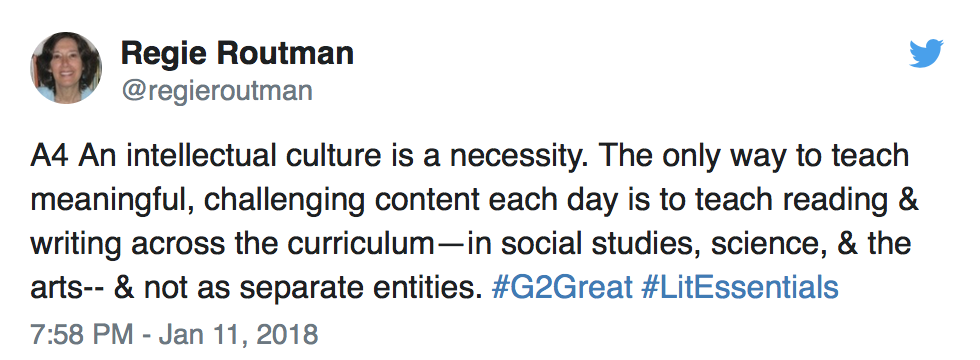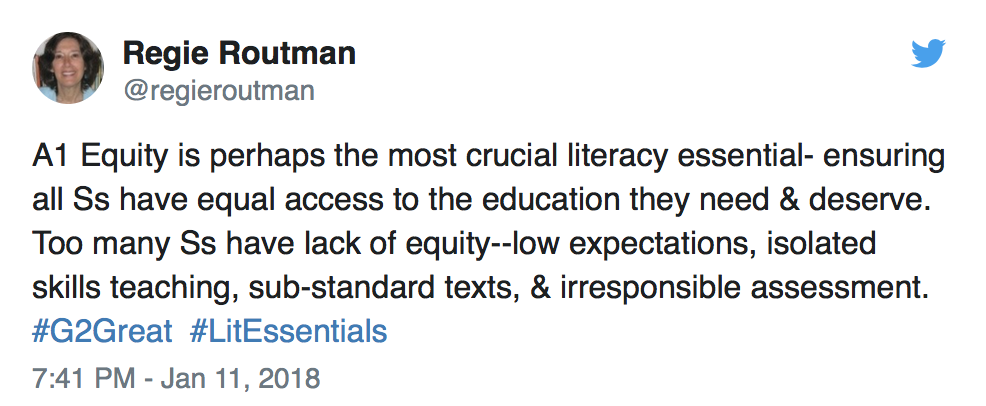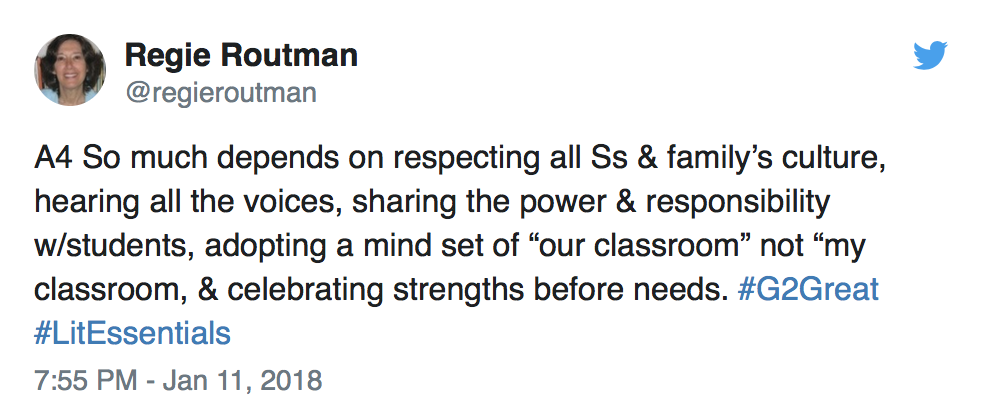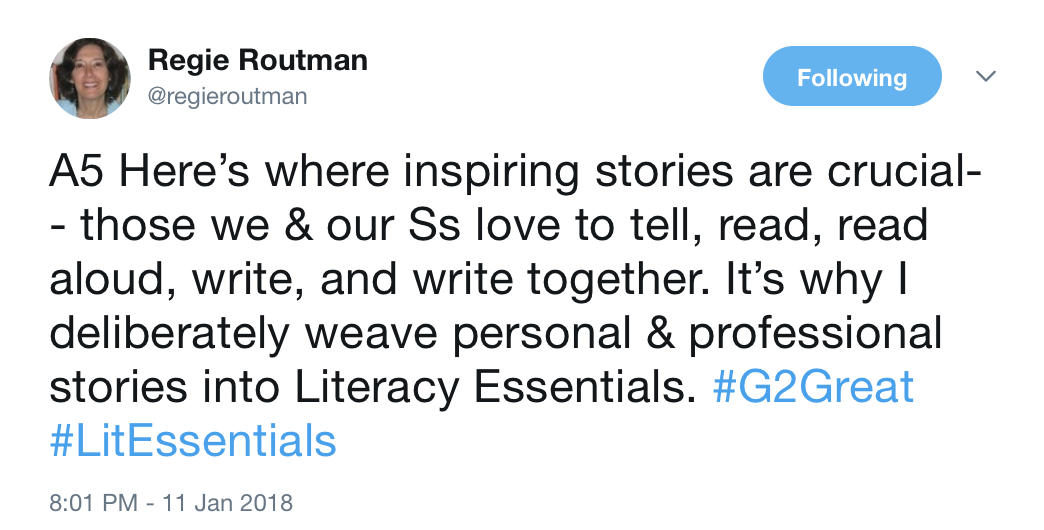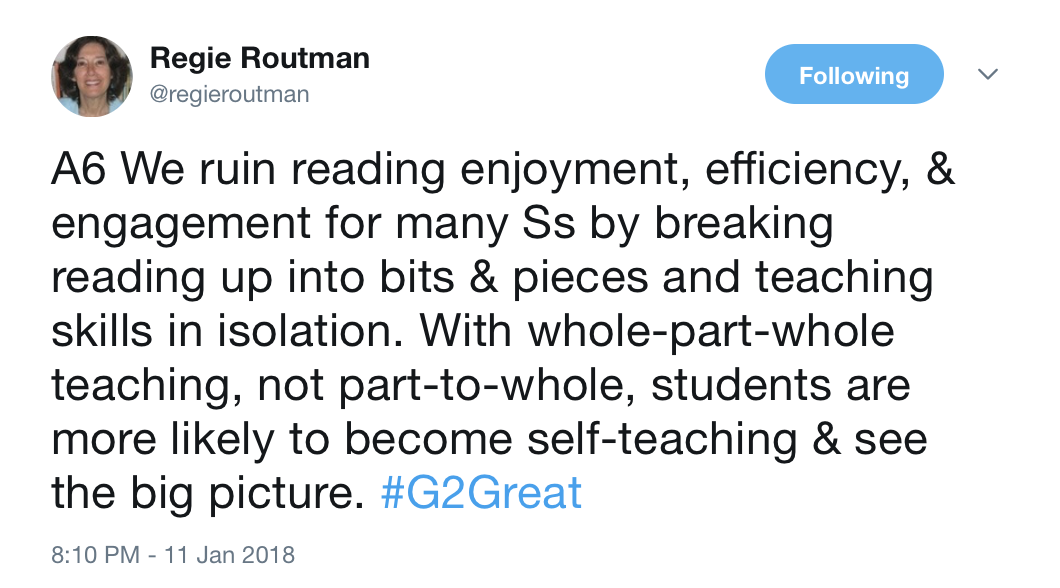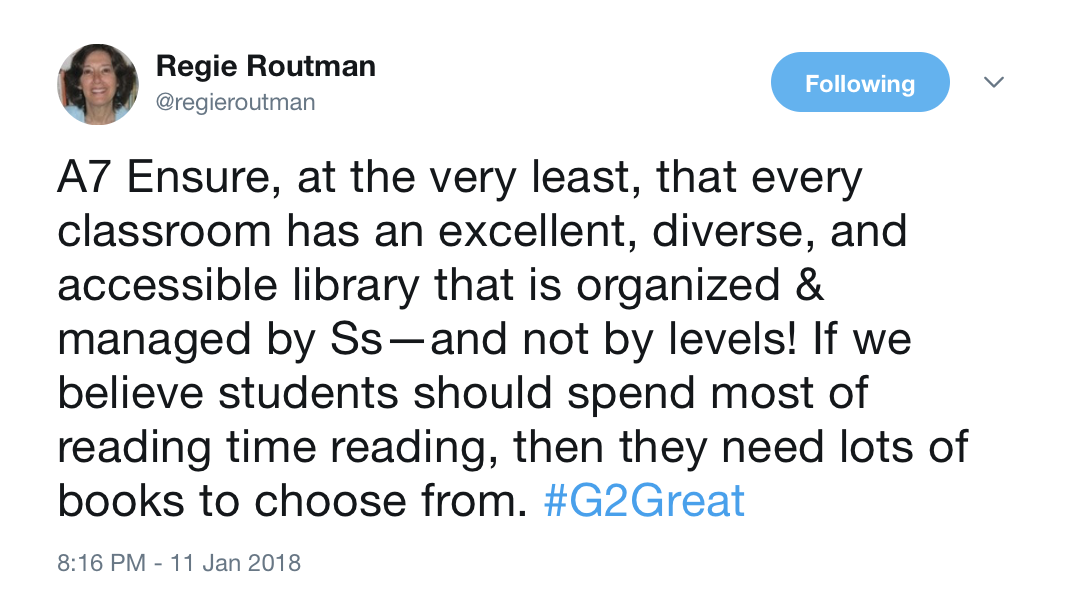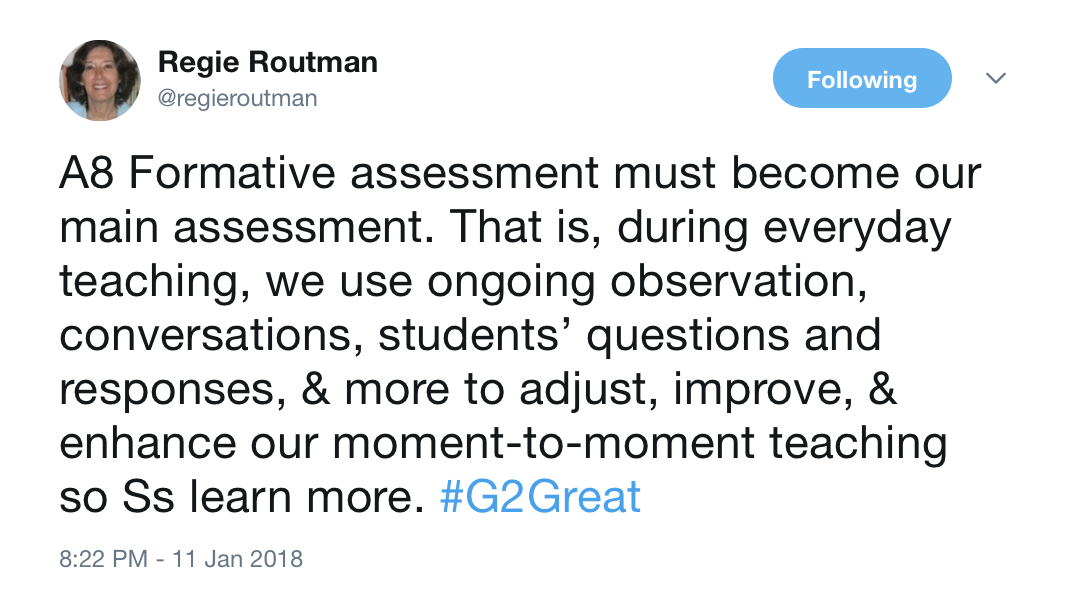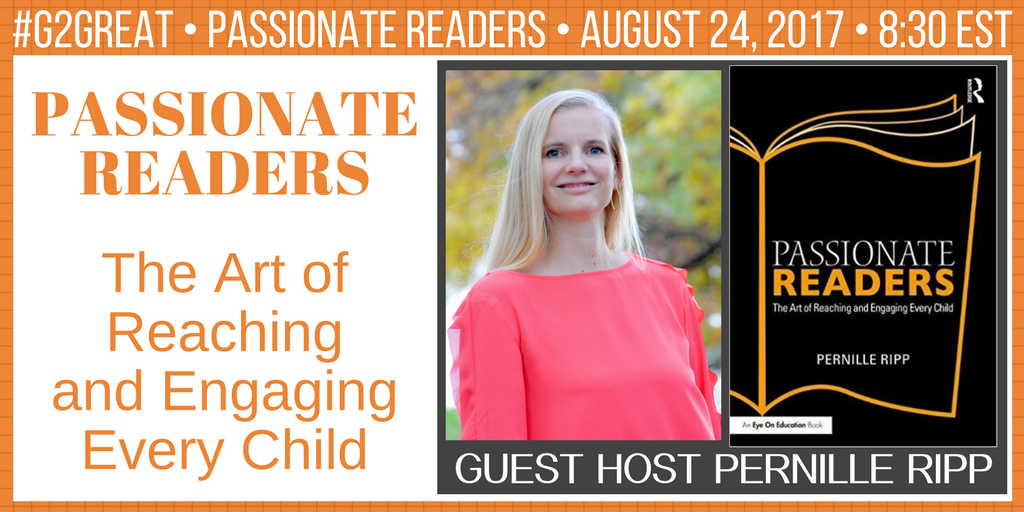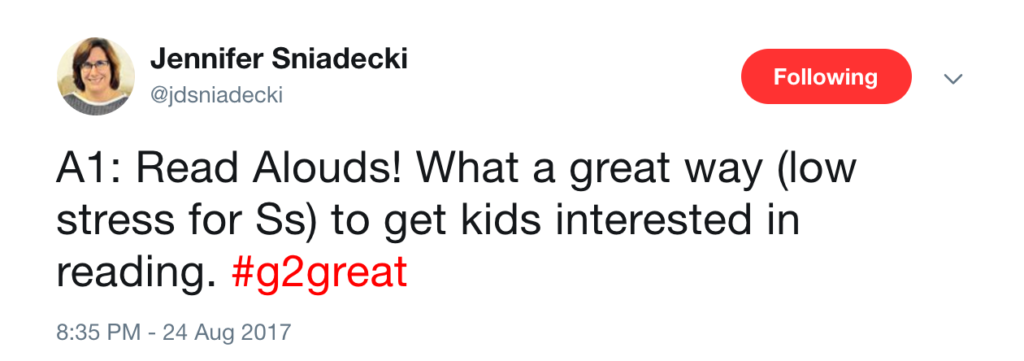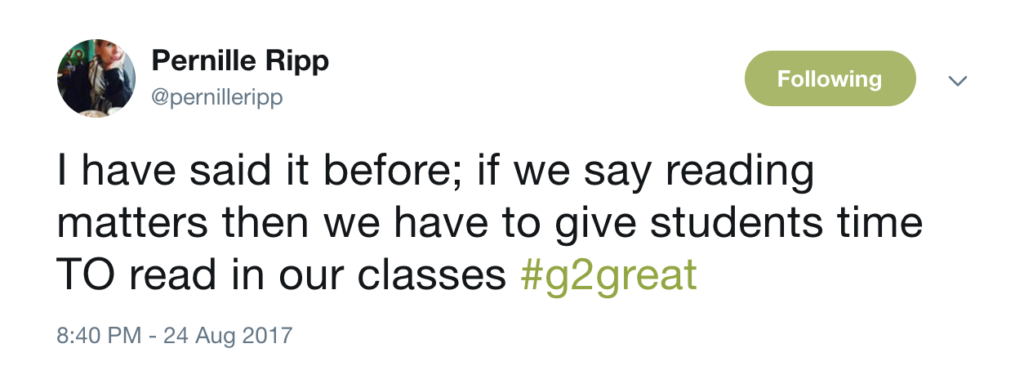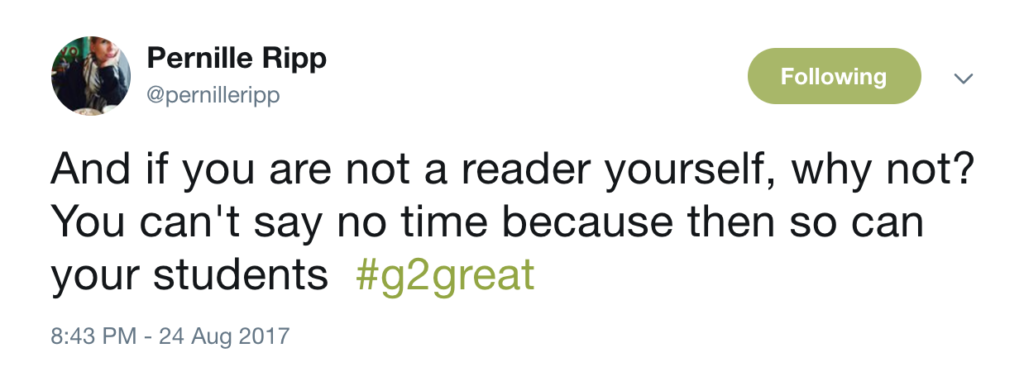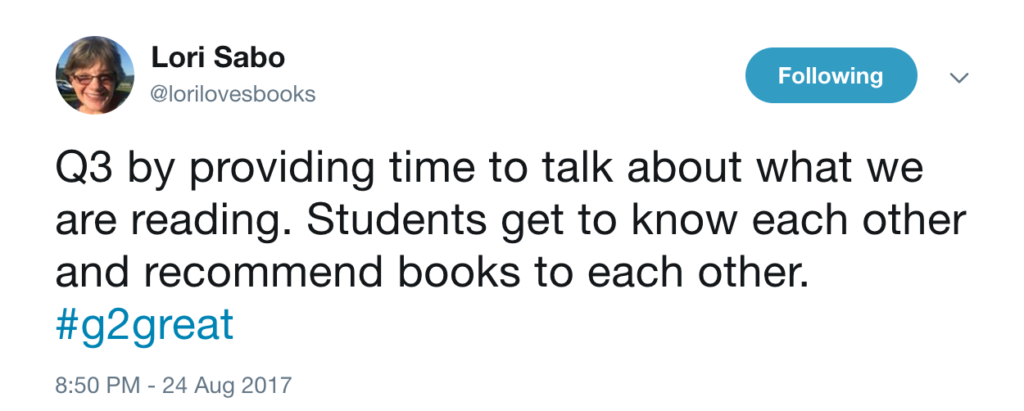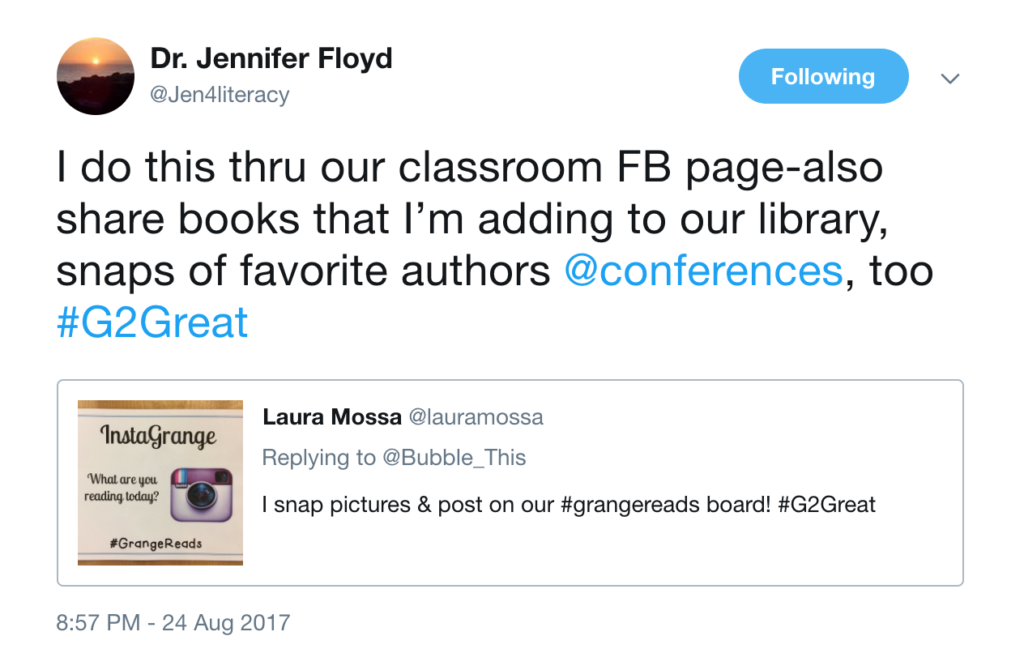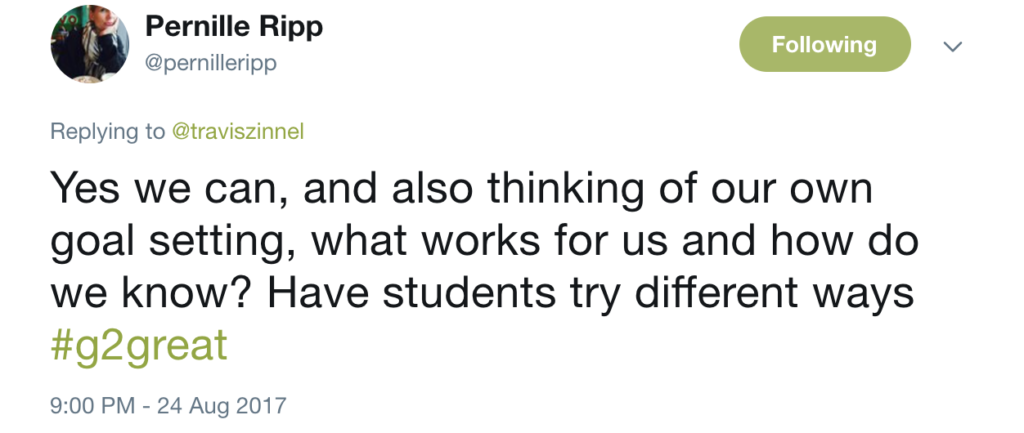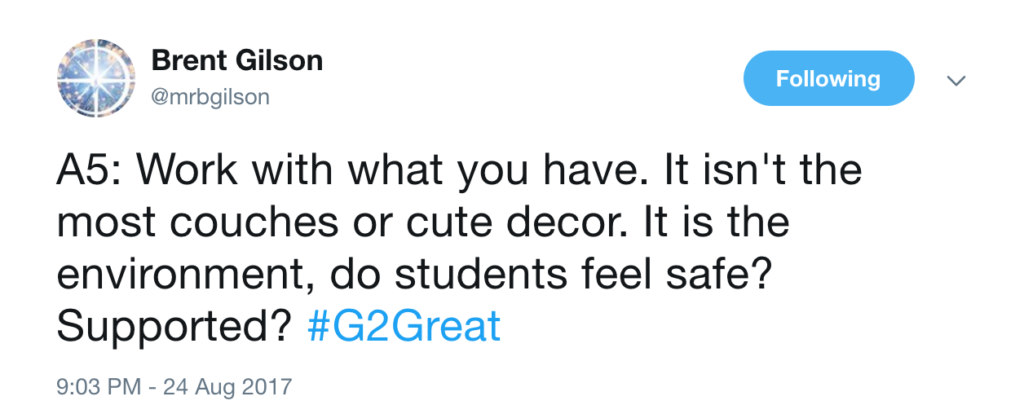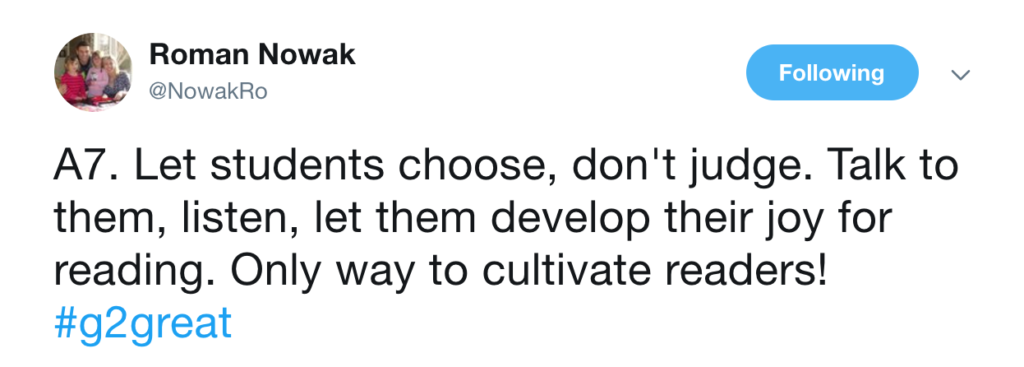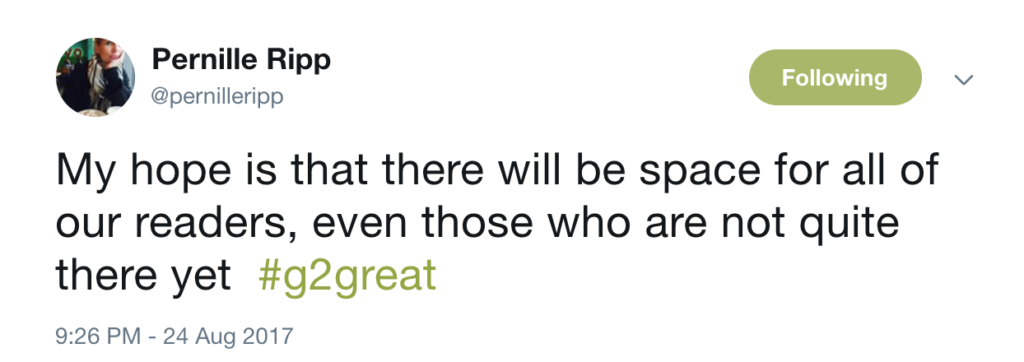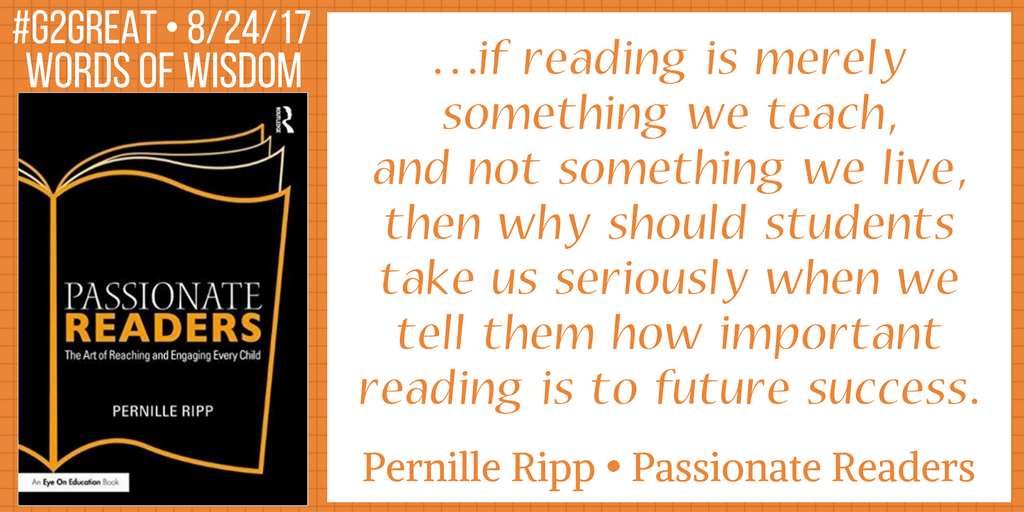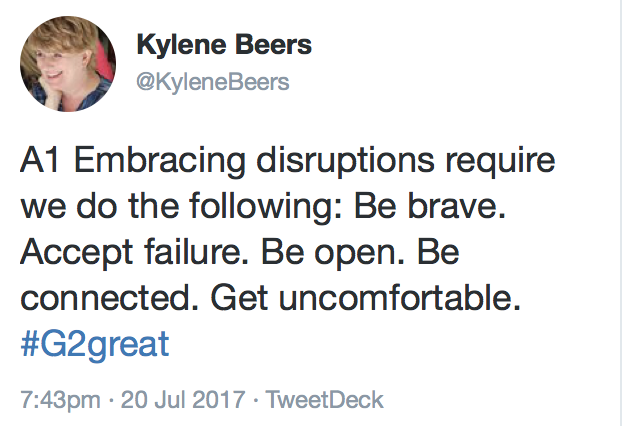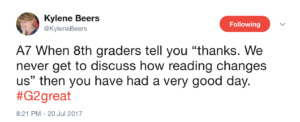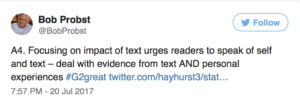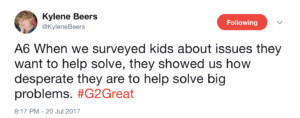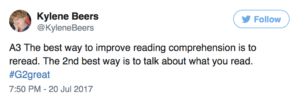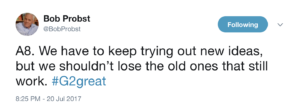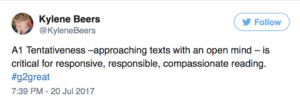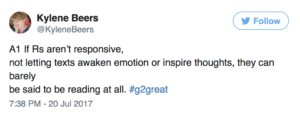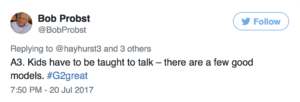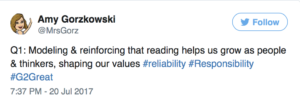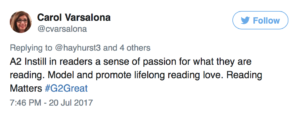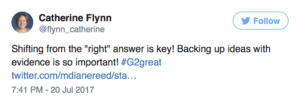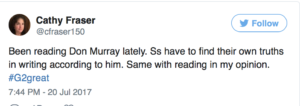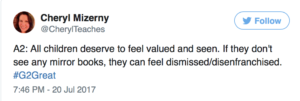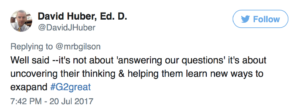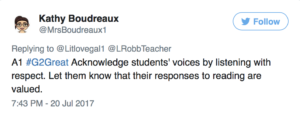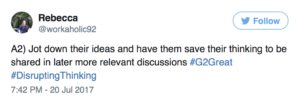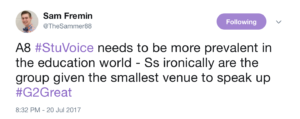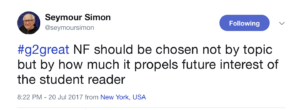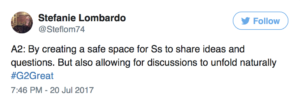By Fran McVeigh
On September 6, 2018, the stars aligned, the chorus appeared from heaven, and the #G2Great chat was literally almost trending from the first minute because Independent Reading is huge, hot, and hard to say “no” to. It would have been easy for teachers and edu-friends to say, “I’m busy. I will catch this topic later.” For many attendees, it was the first week with students back in school. For others, school has been in session for two, three or even four weeks. But our crowd was splendiferous and the learning was off the charts. It was inevitable. The quotes for this chat included words of wisdom from such literacy greats as: Donalyn Miller, Stephanie Harvey, Annie Ward, Ellin Keene, Nancy Atwell, and Richard Allington.
But just as I was narrowing down my final selection of tweets for this blog post, ILA issued their “Children’s Rights to Read” (link) and I was captivated.
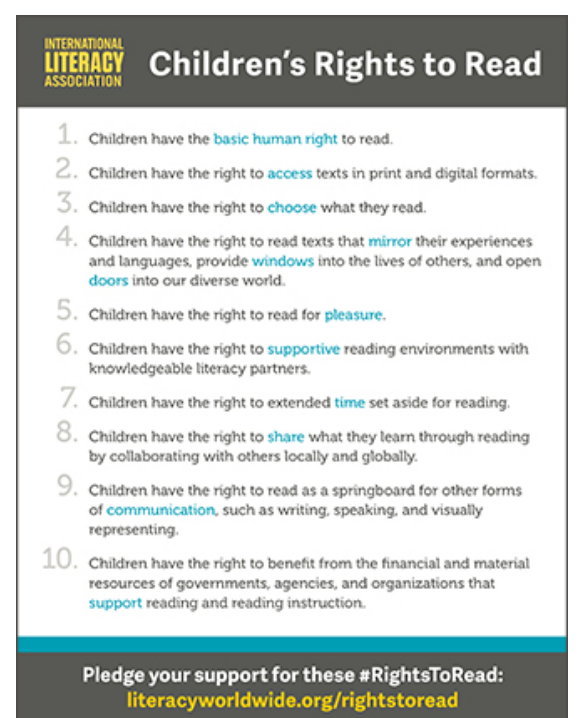
Ten rights. Ten simple rights. Ten rights that highlight the need for access and equity. Ten rights that don’t use the word “Independent” but wouldn’t that just be a redundancy? The “Children’s Rights to Read” are, in truth, aimed at the 750 million people across the world that cannot read and write at a basic level. This notion of “Rights” inspired me to think about whether these ten rights are in place in ALL schools in the U.S. and I am saddened by the knowledge that we have no evidence that they are firmly established in every school building.
The positives in our chat were that I found the following concepts: value, access, love, ubiquitous, equity and sustenance. In the explanations for each concept, please note the crosswalk for the match to the “Children’s Rights to Read” as well.
Value
When we value something, in our personal or professional lives, we make time for it. It gets priority scheduling. It’s not left to chance. It’s never, “Well, if there is time left, we will do independent reading.” Or my most hated because it also speaks to access, “When you get your work done, you can read independently.” (GRRR!) The old Mathew Principle: The rich keep getting richer while the poor continue to get poorer! When independent reading is a priority, I often see it as a “settling in routine” where students enter the classroom and are expected to have their book out and be reading when the bell rings. When independent reading is valued, it’s woven into the schedules and routines so tightly that students will beg for “just two more minutes so I can finish this chapter, PLEEEEASE!”
Value = establishing priorities for what matters
Match to Children’s Rights to Read: 1, 2, 3, 4, 5, 6, 7, 8, 9, 10
Access
Access is so multi-faceted that is difficult to pick a starting point. The number one criteria for access is often touted as time. Is it perceived as a necessity for all students or a luxury? That depends on the value of that time. Would any teacher say that Independent Reading was not important? Then schedule it first. In ink. Boldly. Confidently. After time, the next issue is texts (physical books, magazines, and digital resources including video and art). Where does a teacher develop that classroom library? What about the new teacher with an empty room? But broader than that: is there a classroom library in the science lab, math classroom, economics classroom, and more importantly in the office waiting area? Location of texts could be access, value or equity. Other aspects of access to consider may be more subtle. Access to time to talk about books. Access to a knowledgeable adult/teacher to conference with. Access to that next book on the To Be Read (TBR) stack or that long awaited book that just arrived from the publisher when there are NINE names ahead of yours on the waiting list. Access to books about people like you, your community, and your background. Access to books that interest you. Access to new books that have recently been published. Access to conversations about the books with other kids in your class, your school, your state, or your country.
Access = choice of the right texts at the right time!
Match to Children’s Rights to Read: 1, 2, 3, 4, 5, 6, 7, 8, 9, 10
Love
A love or passion for reading begins at an early age. It is supported when we read aloud, read along with children, and listen to them read. That takes time and texts. It may begin at home or at school. How do we continually grow and nurture book love in our students? As parents, teachers, librarians, or administrators – those many roles that we have – what is our end goal for students? Will their score on a summative state assessment be what the student takes away from their time in the classroom? Or will it be the fact that you helped them fall into love with reading? You helped them explore their interests. You helped them find books and authors that opened whole new worlds. They grew. They changed. They lived their lives differently because of that new found love or passion for reading.
Love = an opportunity to change lives
Match to Children’s Rights to Read: 1, 3, 4, 5, 8
Ubiquitous
When something is ubiquitous, it is pervasive, worldwide or universal. The belief that Independent Reading is a mainstay of reading instruction is ubiquitous for teachers who have a goal of helping students get lost in that “just right” book. Teachers who are readers. Teachers who love books. Teachers who know which titles are being published. Those are the teachers who can connect students with books that will change their lives and put them on a path to continued reading.
Ubiquitous = a need to build lifelong, independent reading habits
Match to Children’s Rights to Read: 1, 2, 3, 4, 5, 6, 7, 8, 9, 10
Equity
Equity in reading means that all students have the opportunity for Independent Reading. It’s not “what you do when your work is done” because some students never do get their work done. It’s not “pull-out intervention” time. It’s not “pull-out for special education service minutes.” Equity also means that everyone has access to texts at school and at home. Lack of wifi does not limit access to digital texts. Students and parents are not expected to personally buy the books on the summer reading lists. Students who are primary caregivers in their homes are not judged when reading logs or notes to parents working multiple jobs simply forget! When equity and Independent Reading are both priorities, then it is a part of Tier 1 for every student. All students. Every Student!
Equity = zip codes do not determine learning
Match to Children’s Rights to Read: 1, 2, 3, 4, 5, 6, 7, 8, 9, 10
Sustenance
How important is reading? That seems to go back to the value of reading. Is your view of reading that it is necessary for life? Does reading nourish your mind, thinking and soul? Do you agree with Rudine Sims Bishop that texts are mirrors, windows, and sliding glass doors? If yes, than having a reading life is a part of your required sustenance plan. Not a luxury. Something that must be prioritized into a daily routine or schedule.
Sustenance = the power of “flow” to hook readers for life
Match to Children’s Rights to Read: 1, 2, 3, 4, 5, 6, 7, 8, 9, 10
So if you remember how an acronym works, these characteristics detailed above, Value, Access, Love, Ubiquitous, Equity and Sustenance spell out
VALUES.
Yes, it was a bit cheesy to use “Value” as the first concept. But it’s important, critical, imperative! It all comes down to our professional values. What do we hold near and dear? What do we know is vital for our students? What does it take to create readers? What does it take to create literate beings who continue to grow and learn once they leave our school halls?
If we value Independent Reading and make it a professional imperative, it will be a priority every day in every classroom. If we value Independent Reading and make it a professional imperative, time and money will be allocated to support it. If we value Independent Reading and make it a professional imperative, resources from discontinuing old antiquated bribes like AR can be re-purposed to support it (Thanks, Brent for that idea!). If we value Independent Reading and make it a professional imperative, students will love to read, will be able to read and will choose to be readers all their lives.
Just a quick reprise for “Children’s Rights to Read.” Those 10 Rights above are huge. Note that Value, Access, Ubiquitous, Equity and Sustenance connected to all 10. ALL 10! And there were a total of 55 connections out of a possible 60! 92% means Independent Reading as a way to support Children’s Rights to Read is a Professional Imperative!
Curated Tweets:
Additional Resources:
Wakelet – Link
Donalyn Miller – “I’ve Got Research, Yes, I do. I’ve Got Research. How About You?”
ILA – “Making Independent Reading Work”
Scholastic – “The Joy and Power of Reading”
Kari Yates – Heinemann – “Five Ways to Reclaim Time for Independent Reading”
Neil Gaiman and Chris Riddell – “On Why We Need Libraries and Librarians”
